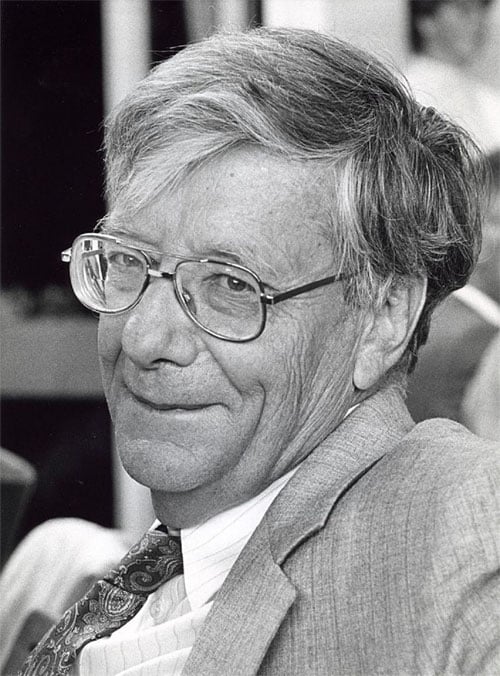
Nicolaas Bloembergen, Winner of Nobel Prize in Physics, Dies at 97
Dutch-born optics pioneer and Nobel Prize winner Nicolaas Bloembergen died at home on Sept. 5 in Tucson, Ariz. He was 97. The cause of death was cardiorespiratory failure.
 Bloembergen, who spent more than 40 years on the faculty at Harvard University, made lasting contributions to the development of the laser and was a pioneer in the fields of nuclear magnetic resonance spectroscopy and nonlinear optics.
Bloembergen, who spent more than 40 years on the faculty at Harvard University, made lasting contributions to the development of the laser and was a pioneer in the fields of nuclear magnetic resonance spectroscopy and nonlinear optics.
Bloembergen shared the 1981 Nobel Prize in Physics with Arthur L. Schawlow of the U.S.and Kai M. Siegbahn of Sweden. He was cited by the Swedish Academy for his work in the field of nonlinear optics, and was considered the father of nonlinear optics.
Bloembergen was born March 11, 1920, in Dordrecht, the Netherlands. He enrolled at the University of Utrecht in 1938, where he received the Dutch equivalent of a bachelor’s degree in 1941 and the equivalent of a master’s degree in 1943, just before the Nazis shut down the institution. After graduation he continued his studies while in hiding, surviving the “hunger winter” of 1944 by eating tulip bulbs to fill his stomach.
After the Allied forces liberated the Netherlands in 1945, Bloembergen moved to the U.S. and enrolled at Harvard, where he worked in the lab of Edward M. Purcell on nuclear magnetic resonance. He returned to the Netherlands in 1948 to earn his doctoral degree from the University of Leiden, then returned to the U.S. In 1958, he became a U.S. citizen.
Bloembergen became a professor at Harvard in 1951 and remained at Harvard until 1990, when he moved to Tucson and became a professor emeritus at the University of Arizona, College of Optical Sciences.
In 1974, he received the National Medal of Science from President Gerald R. Ford.
Bloembergen is survived by his wife of 67 years, Huberta Deliana Brink Bloembergen; a son, Brink Bloembergen; two daughters, Antonia Bloembergen and Juliana Dalton; and two grandchildren.
Published: September 2017